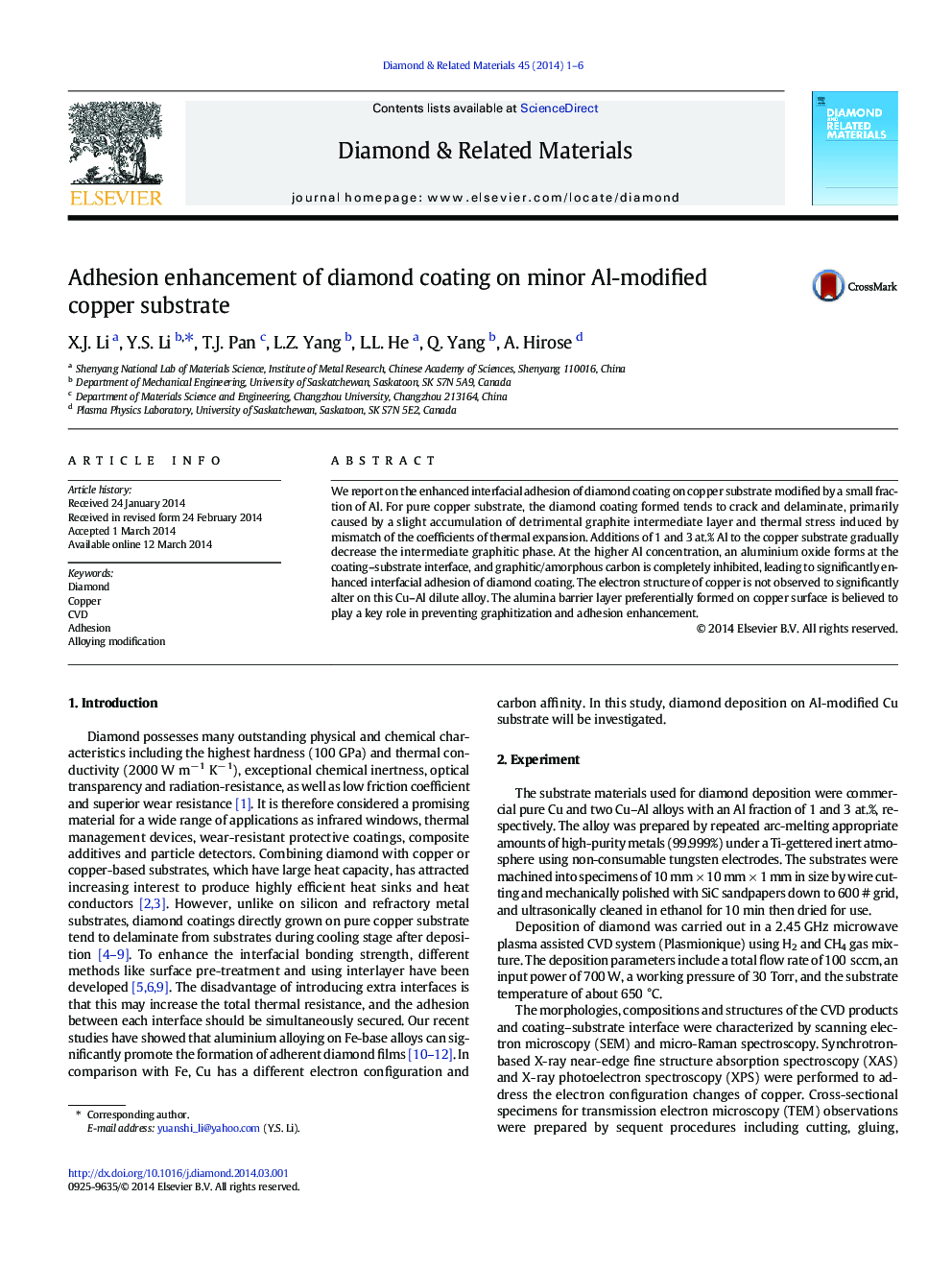| Article ID | Journal | Published Year | Pages | File Type |
|---|---|---|---|---|
| 701732 | Diamond and Related Materials | 2014 | 6 Pages |
•Direct deposition of diamond on pure copper shows weak interfacial adhesion.•A minor Al alloying on Cu greatly enhances the diamond coating adhesion.•Interfacial analysis reveals the formation of a thin alumina barrier layer.•The possible mechanism is proposed.
We report on the enhanced interfacial adhesion of diamond coating on copper substrate modified by a small fraction of Al. For pure copper substrate, the diamond coating formed tends to crack and delaminate, primarily caused by a slight accumulation of detrimental graphite intermediate layer and thermal stress induced by mismatch of the coefficients of thermal expansion. Additions of 1 and 3 at.% Al to the copper substrate gradually decrease the intermediate graphitic phase. At the higher Al concentration, an aluminium oxide forms at the coating–substrate interface, and graphitic/amorphous carbon is completely inhibited, leading to significantly enhanced interfacial adhesion of diamond coating. The electron structure of copper is not observed to significantly alter on this Cu–Al dilute alloy. The alumina barrier layer preferentially formed on copper surface is believed to play a key role in preventing graphitization and adhesion enhancement.
